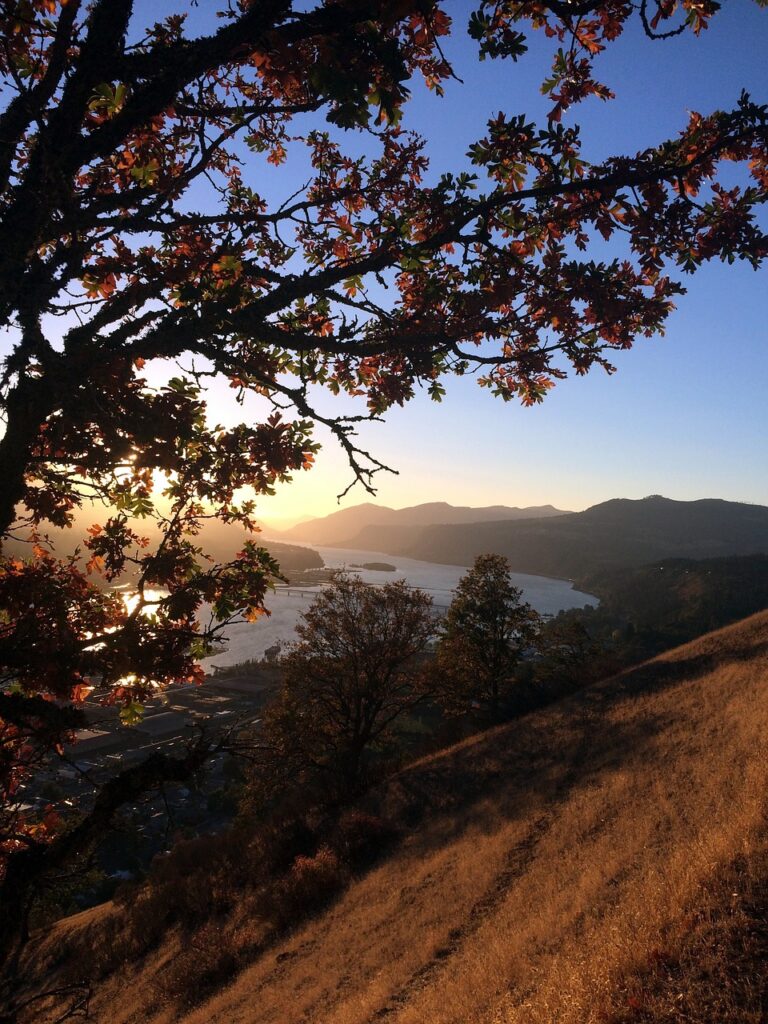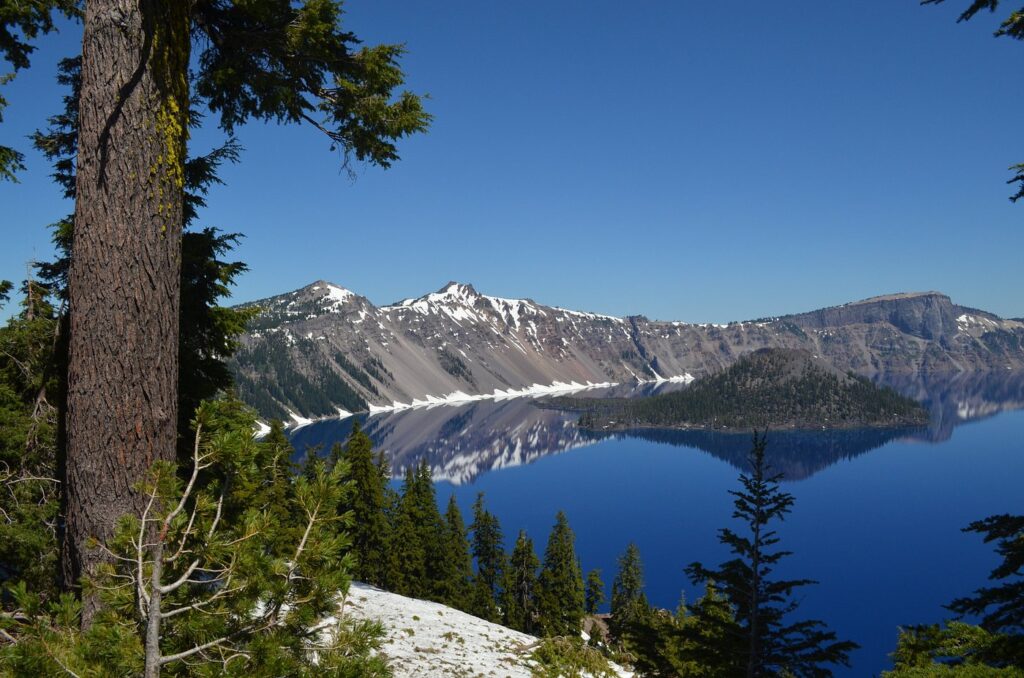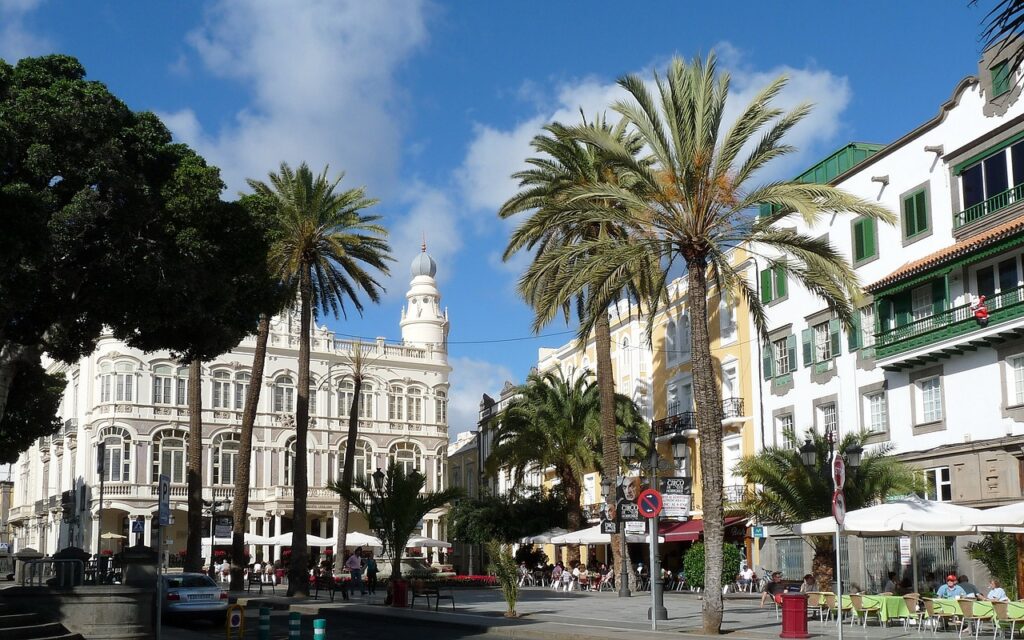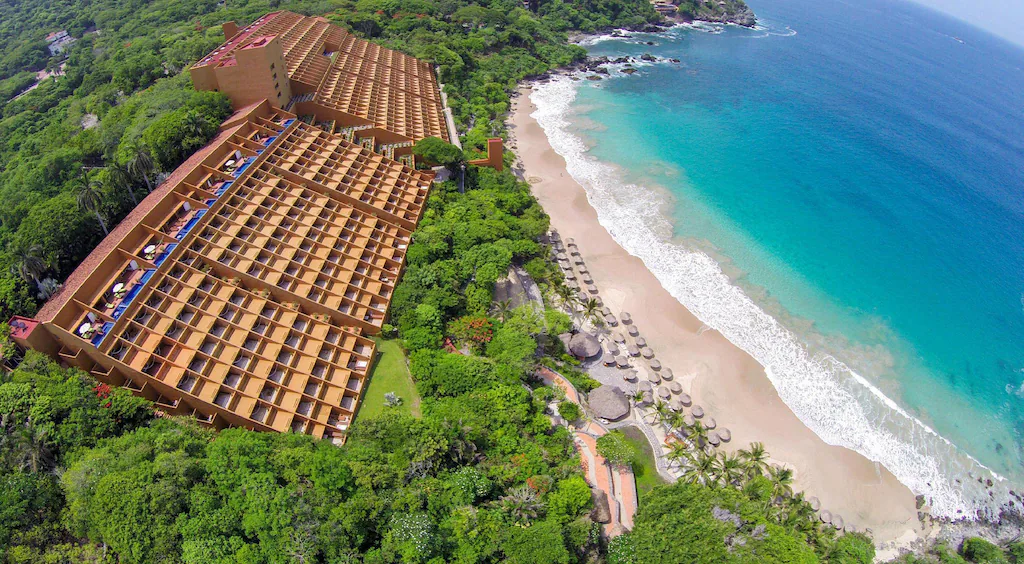An Epic Solo Road Trip Through Oregon: A 7-Day Adventure
Oregon is one of those rare places where the beauty of nature surrounds you at every turn. From the rugged coastlines to the towering mountains and everything in between, it’s a state that begs to be explored. As a solo female traveler, I embarked on a 7-day road trip through Oregon, and let me tell you, it was nothing short of magical. Here’s a detailed account of my journey, packed with tips on how to get there, where to stay, and where to eat along the way.

- Getting to Oregon: Your Gateway to the Ultimate Road Trip
- Should You Rent a Car for This 7-Day Oregon Adventure? (Yes, and Consider a Campervan!)
- The Best Time to Embark on This Oregon Road Trip (Seasonal Breakdown)
- 7 Days Oregon Coast Road Trip Iterinary
- Day 1: Portland – The Journey Begins
- Day 2: Columbia River Gorge – Waterfall Wonderland
- Day 3: Hood River – A Windsurfing Paradise
- Day 4: Bend – Outdoor Adventures Galore
- Day 5: Crater Lake – The Jewel of Oregon
- Day 6: Oregon Coast – A Scenic Drive Along Highway 101
- Day 7: Return to Portland – The Journey Comes Full Circle
- Sign up for the best travel tips and adventures!
Getting to Oregon: Your Gateway to the Ultimate Road Trip
Oregon’s diverse landscapes make it a dream destination for road trippers, but first, you need to figure out how to get there. Fortunately, getting to Oregon is relatively straightforward, whether you’re flying in, driving from a neighboring state, or even arriving by train.
Flying to Oregon:
If you’re coming from afar, flying into Portland International Airport (PDX) is the most convenient option. PDX is well-connected to major cities across the United States and offers a seamless entry point to the state. The airport is known for its easy navigation, friendly staff, and even some local touches like live music and art exhibits. Once you land, you’ll find a variety of rental car options right at the airport, making it easy to hit the road as soon as you arrive.
Driving to Oregon:
For those who live in neighboring states like California, Washington, or Idaho, driving to Oregon is a fantastic way to start your adventure. Major highways like I-5 and I-84 make the state easily accessible from the north, south, and east. If you’re coming from California, consider taking the scenic Pacific Coast Highway (Highway 1) up to Oregon. The drive is stunning, with ocean views that will make the journey just as memorable as the destination.
Arriving by Train:
If you prefer a more relaxed start to your trip, Amtrak’s Coast Starlight route runs from Los Angeles to Seattle, with several stops in Oregon, including Portland, Salem, and Eugene. The train journey offers scenic views and a comfortable ride, allowing you to sit back and enjoy the landscapes before starting your road trip.
Planning Your Arrival:
No matter how you arrive, planning your arrival time is key. If you’re flying or taking the train, aim to arrive in the morning or early afternoon so you have plenty of daylight to explore your first destination. If you’re driving, consider breaking up the trip with a stop or two along the way to enjoy the sights and avoid road fatigue.
Read more: Acadia National Park in Maine: Things to Do and 4 Days Travel Itinerary
Should You Rent a Car for This 7-Day Oregon Adventure? (Yes, and Consider a Campervan!)
One of the most common questions travelers ask when planning a road trip in Oregon is whether they need to rent a car. The short answer is yes – a car is essential for this 7-day adventure. But if you’re feeling more adventurous and want to combine transportation with accommodation, consider renting a campervan instead.
Why Rent a Car?
Oregon’s diverse landscapes – from its rugged coastlines to its mountainous terrains – are best explored at your own pace. Renting a car gives you the freedom to stop wherever you want, take detours, and fully immerse yourself in the journey. Public transportation is limited outside of major cities like Portland, so a car is necessary to reach the state’s remote and beautiful locations.
With a car, you can easily follow the itinerary from Portland to the Columbia River Gorge, Hood River, Bend, Crater Lake, the Oregon Coast, and back to Portland. The distances between these locations vary, but with a car, you can comfortably drive between destinations in a few hours, allowing you to maximize your time at each stop.
Consider a Campervan:
For those looking for a more immersive experience, renting a campervan is an excellent option. Oregon is incredibly campervan-friendly, with numerous campgrounds and RV parks scattered throughout the state. A campervan allows you to bring your accommodation with you, offering flexibility in your travel plans. You can choose to camp out in nature, wake up to the sound of the ocean on the coast, or enjoy a night under the stars near Crater Lake.
Campervans come equipped with basic amenities like a bed, kitchen, and sometimes even a bathroom. This setup not only saves you money on accommodation but also provides the freedom to stay in more remote locations where hotels or lodges might not be available. Companies like Escape Campervans and GoCamp offer a range of campervans for rent in Portland, making it easy to pick one up at the start of your trip.
Driving in Oregon:
Driving in Oregon is generally straightforward. The state’s roads are well-maintained, and the scenic byways are clearly marked. However, it’s important to be prepared for varying road conditions, especially if you’re traveling during the winter months when snow and ice can be an issue in the mountains. If you opt for a campervan, be aware that it may require more careful handling, especially on winding mountain roads or narrow coastal highways.
Parking and Camping:
If you choose a campervan, you’ll find plenty of places to park overnight. Oregon has a wide range of campgrounds, from developed sites with full amenities to more primitive, dispersed camping spots. Many state parks along the coast and in the mountains offer campgrounds where you can stay for a night or two. Be sure to reserve spots in advance, especially during the peak summer season.
Costs and Convenience:
While renting a campervan might be slightly more expensive than a regular car, the savings on accommodation can make up for it. Plus, the convenience of having everything you need in one vehicle can’t be beaten, especially when you’re exploring remote areas.
The Best Time to Embark on This Oregon Road Trip (Seasonal Breakdown)
Oregon is a year-round destination, but the experience you’ll have on this 7-day road trip can vary greatly depending on the season you choose to travel. Here’s a breakdown of what you can expect in each season, so you can pick the best time for your adventure.
Spring (March to May):
Spring is a wonderful time to visit Oregon. The state comes alive with blooming wildflowers, and the landscapes are lush and green. In the Columbia River Gorge, waterfalls like Multnomah Falls are at their most powerful, fed by the melting snow from the mountains. The weather can be unpredictable, with a mix of rain and sunshine, so be sure to pack layers and waterproof gear.
Spring is also a quieter time to visit, with fewer tourists compared to the summer months. This means you’ll have more of the trails and scenic spots to yourself. The downside is that higher elevations, like Crater Lake, may still have snow, and some roads or trails might be closed. However, the snow adds a beautiful contrast to the already stunning scenery, and it’s a great time for photography.
Summer (June to August):
Summer is peak travel season in Oregon, and for good reason. The weather is warm and dry, making it ideal for outdoor activities like hiking, kayaking, and exploring the coast. The Oregon Coast Highway (Highway 101) is particularly beautiful in the summer, with endless sunny days and clear skies.
Crater Lake National Park is fully accessible in the summer, and the Rim Drive is open, offering spectacular views of the lake. However, summer also means more crowds, so it’s important to book accommodations and campsites well in advance. If you’re planning to rent a campervan, make sure to reserve it early, as they tend to be in high demand during this time.
One of the highlights of summer in Oregon is the numerous festivals and events. From the Portland Rose Festival to the Oregon Brewers Festival, there’s always something happening that adds to the excitement of a summer road trip.
Fall (September to November):
Fall is arguably the best time for a road trip in Oregon. The weather is still relatively warm, especially in September and early October, but the summer crowds have thinned out. The fall foliage in Oregon is spectacular, particularly in the Columbia River Gorge and along the McKenzie River, where the changing leaves create a stunning backdrop.
Harvest season is in full swing, making it a great time to visit wineries in the Willamette Valley or enjoy farm-to-table dining in cities like Bend and Hood River. Crater Lake, with its crystal-clear waters and surrounding golden foliage, is a must-see during the fall.
While the weather is generally pleasant, be prepared for cooler temperatures and the possibility of rain as you move later into the season. Some higher elevation areas may start to see snow by November, so it’s important to check road conditions if you’re traveling late in the fall.
Winter (December to February):
Winter transforms Oregon into a snowy wonderland, particularly in the mountains and higher elevations. If you’re a fan of winter sports, this is the perfect time to visit. Mount Hood and Bend are popular destinations for skiing, snowboarding, and snowshoeing. The drive to Crater Lake in winter is a bit more challenging due to snow, but the sight of the lake surrounded by snow-covered cliffs is worth the effort.
The Oregon Coast is also beautiful in the winter, with dramatic stormy seas and fewer tourists. Coastal towns like Yachats and Cannon Beach offer cozy retreats with fireplaces and ocean views, perfect for a relaxing winter getaway.
However, winter travel in Oregon requires some extra preparation. Snow chains or winter tires are essential if you’re driving through the mountains. Some roads, including sections of the Rim Drive at Crater Lake, may be closed due to snow, so it’s important to plan your route carefully and check road conditions regularly.
7 Days Oregon Coast Road Trip Iterinary
Day 1: Portland – The Journey Begins
Starting in Portland was the perfect way to ease into my road trip. Portland is a city that vibes with creativity and has a cool, laid-back atmosphere that makes you feel at home immediately. I arrived by plane, with Portland International Airport (PDX) being the most convenient option. Renting a car at the airport was a breeze, and soon I was ready to hit the road.
Where to Stay:
I chose to stay in the Pearl District, a trendy neighborhood with boutique hotels and easy access to the city’s best spots. The Duniway Portland was my home for the night – stylish, comfortable, and within walking distance to great cafes and restaurants.
Where to Eat:
For dinner, I headed to Cheryl’s on 12th, a lively spot offering delicious small plates. Their smoked trout board and Korean fried chicken are a must-try. For breakfast before hitting the road the next morning, I couldn’t resist visiting Voodoo Doughnut – the iconic Portland donut shop. The maple bacon bar? Worth every calorie!
Day 2: Columbia River Gorge – Waterfall Wonderland
Leaving the city behind, I ventured into the Columbia River Gorge, a scenic area known for its breathtaking waterfalls. The drive from Portland is just an hour along the Historic Columbia River Highway, which is an experience in itself with panoramic views at every turn.
Tour option: Columbia River Gorge Waterfalls Tour from Portland
Must-See Stops:
Multnomah Falls is the most famous waterfall in the gorge, and for a good reason. Standing at 620 feet, it’s truly a sight to behold. I also took the time to hike to the lesser-known but equally beautiful Wahclella Falls. The 2-mile round-trip hike was perfect for a morning adventure.
Where to Stay:
That night, I stayed at the Skamania Lodge in Stevenson, Washington, just across the river. The lodge offered incredible views of the Columbia River and was a perfect retreat after a day of hiking.
Where to Eat:
The Cascade Dining Room at the lodge served up a delicious dinner with locally sourced ingredients. I indulged in the Pacific Northwest salmon, which was cooked to perfection.
Read more: A First-Timer’s Guide to the Road to Hana: A Journey Through Maui’s Hidden Gems
Day 3: Hood River – A Windsurfing Paradise
On day three, I drove to Hood River, a charming town known as a windsurfing mecca. The 30-minute drive was scenic, with Mount Hood looming in the distance.
Activities:
Although I’m not a windsurfer, I enjoyed watching the experts glide across the water at the Columbia River. For those looking to try it out, several schools offer lessons. Instead, I chose to explore the town, visiting local shops and enjoying a leisurely afternoon at the Hood River Waterfront Park.
Where to Stay:
I stayed at the Columbia Cliff Villas Hotel, which offered stunning views of the river and the gorge. The rooms were cozy, and the staff were incredibly welcoming.
Where to Eat:
Dinner at Celilo Restaurant & Bar was a highlight. The farm-to-table menu featured fresh, seasonal ingredients. I couldn’t resist the roasted beet salad followed by the pan-seared trout.
You can combine your visit to River Gorge and Mount Hood by choosing this tour option!
Day 4: Bend – Outdoor Adventures Galore
Leaving Hood River, I embarked on a longer drive to Bend, a town famous for its outdoor activities and craft breweries. The 3-hour drive took me through scenic routes with glimpses of Mount Hood and vast pine forests.
Things to Do:
Bend is an outdoor lover’s paradise. I spent the afternoon kayaking on the Deschutes River, with the sparkling water reflecting the surrounding mountains. For those into hiking, the Tumalo Falls trail is a must-do. The 7-mile round trip hike offers incredible views of the 97-foot waterfall.
Where to Stay:
I checked into the Oxford Hotel in downtown Bend. This eco-friendly hotel offered a luxurious stay with easy access to all the downtown attractions.
Where to Eat:
Bend is known for its craft beer scene, so I made sure to visit Deschutes Brewery for a flight of their famous beers. For dinner, I dined at Zydeco Kitchen & Cocktails, where the Cajun-inspired dishes were a delicious contrast to the Northwest flavors I had been enjoying.
Day 5: Crater Lake – The Jewel of Oregon
My journey continued south to Crater Lake National Park, a place I had been dreaming of visiting for years. The 2-hour drive from Bend was filled with anticipation, and when I finally arrived, the sight of the deep blue lake surrounded by cliffs took my breath away.
What to See:
Crater Lake is the deepest lake in the United States, formed over 7,000 years ago when a volcano collapsed. I spent the day driving around the Rim Drive, which offers 33 miles of stunning viewpoints. Don’t miss the hike to Watchman Peak for the best views of the lake.
Where to Stay:
I stayed at the historic Crater Lake Lodge, which is right on the rim of the lake. Waking up to the sight of Crater Lake in the morning was an experience I’ll never forget.

Where to Eat:
The lodge’s dining room offers an excellent dinner menu. I tried the Oregon lamb, which was tender and flavorful. Breakfast at the lodge was equally impressive, with views of the lake as you enjoy your meal.
Day 6: Oregon Coast – A Scenic Drive Along Highway 101
From Crater Lake, I drove to the Oregon Coast, a route that took me through forests and along rivers until I reached the Pacific Ocean. The drive along Highway 101 is famous for its scenic views, and it didn’t disappoint.
Highlights:
I made several stops along the coast, including the charming town of Florence, where I explored the Oregon Dunes National Recreation Area. I also visited Cape Perpetua, where I hiked to the top for panoramic views of the ocean.
Where to Stay:
I spent the night in Yachats, a small coastal town with a laid-back vibe. I stayed at the Overleaf Lodge, where the rooms overlook the ocean. Falling asleep to the sound of the waves was pure bliss.
Where to Eat:
Dinner at Luna Sea Fish House in Yachats was a treat. The fish and chips were some of the best I’ve ever had. For breakfast, the Green Salmon Coffee Shop offered delicious pastries and organic coffee.
Read more: A Solo Female Traveler’s Hilarious and Heartfelt Adventure to Bushkill Falls, Poconos
Day 7: Return to Portland – The Journey Comes Full Circle
On the final day of my road trip, I made my way back to Portland, taking the scenic route through the Tillamook State Forest. The drive took about four hours, but the beautiful landscapes made it fly by.
Final Thoughts:
Back in Portland, I had a final meal at Le Pigeon, a French-inspired restaurant that perfectly wrapped up my culinary adventures in Oregon. Their signature beef cheek bourguignon was divine.
As I returned my rental car and prepared to fly back home, I reflected on the incredible journey I had just completed. Traveling solo through Oregon allowed me to connect with nature in a profound way, and the state’s diverse landscapes offered something new each day. Whether you’re an adventurer at heart or simply looking to escape the hustle and bustle of everyday life, an Oregon road trip is the perfect remedy. I can’t wait to return and explore even more of this beautiful state.
Oregon has so much to offer, from its vibrant cities to its awe-inspiring natural wonders. As a solo female traveler, I felt safe and welcomed at every turn. So, if you’re considering a road trip through Oregon, my advice is simple: Go for it! The adventure of a lifetime awaits.



